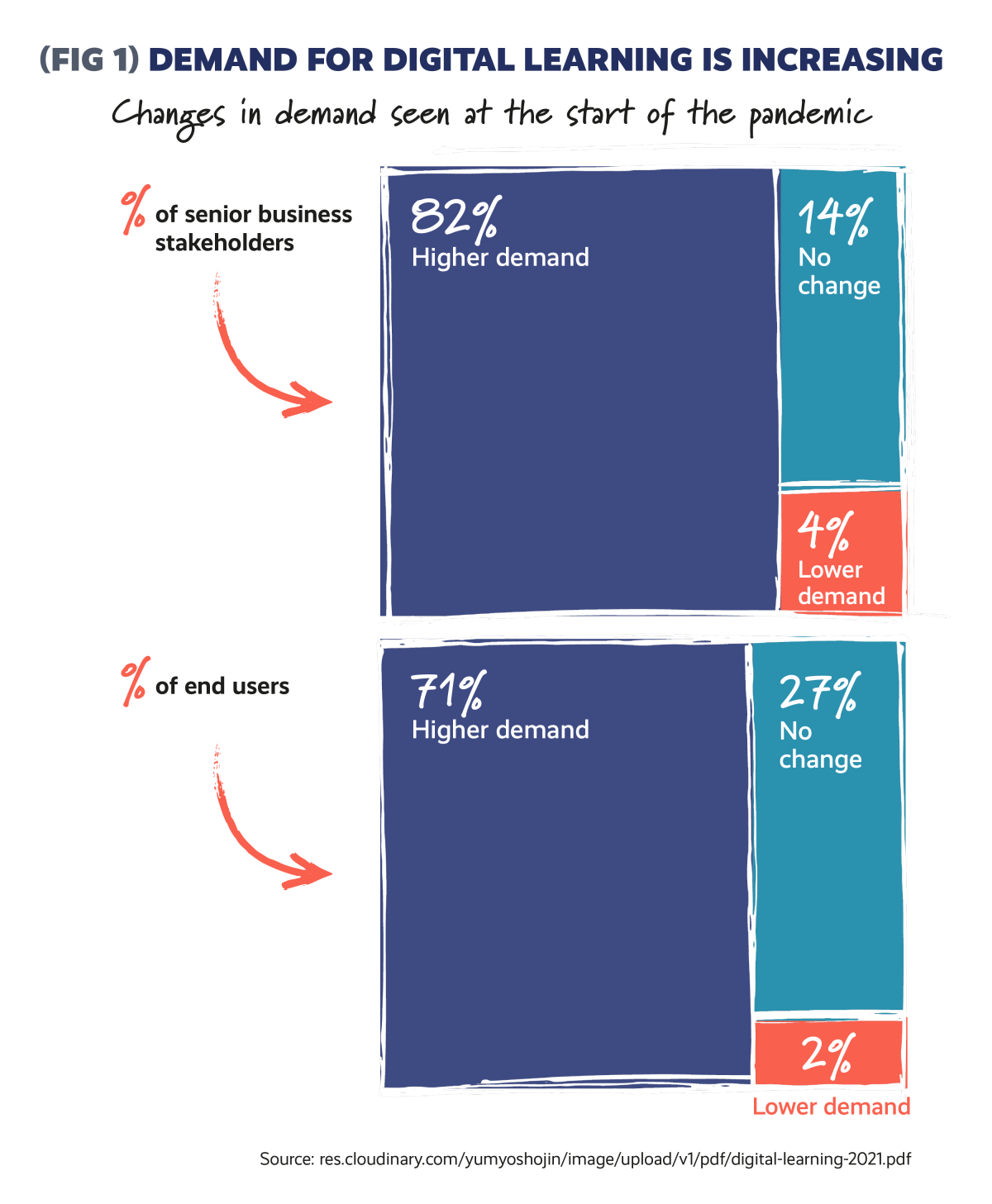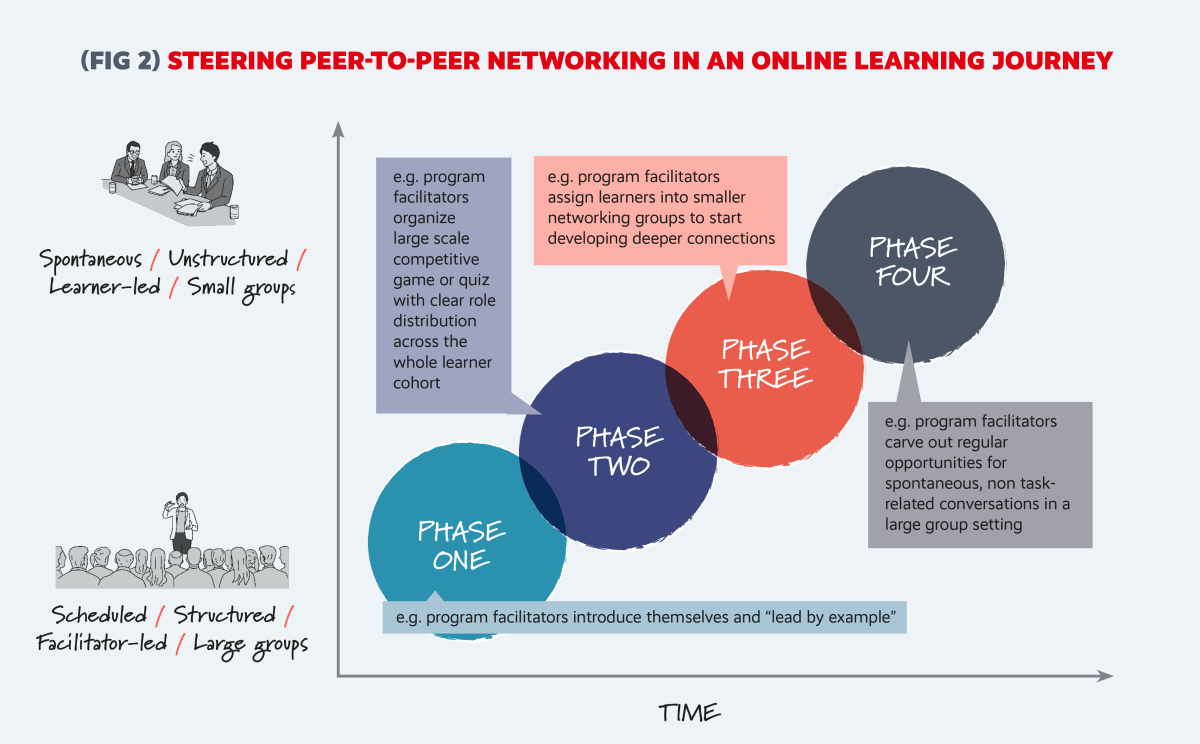Same same… but different

Public life is tentatively reopening across the world, but clearly some of the changes brought about by the COVID-19 pandemic are here to stay – the executive education industry, in particular, has been shaken to its core. Whilst digital learning tools have played a modest role in most business schools’ offerings for many years, the past two years have witnessed an unprecedented investment in bespoke learning management systems (LMS) and digital classroom technology to allow teaching to continue. In retrospect, the sudden closure of the ESMT Berlin campus was a watershed moment. The opportunity to radically overhaul our business model and unleash the creativity of faculty and program facilitators did not go to waste. Pay-off for months of uncertainty and risk-taking has been a once-in-a-generation learning curve – and thanks to a healthy dose of honest feedback from clients, we learned how remote learning can match or even surpass a campus-based learning journey.

Necessity is the mother of all invention
Planning an executive education program in those early months of 2020 turned out to be far from simple, even for the most seasoned of program teams at ESMT. It wasn’t just the logistics of learning new technologies overnight that proved a challenge. We also had to first tackle a series of assumptions about the inferiority of learning online. The real job in those early months became: how can we convince disappointed executives that a virtual learning journey can be just as transformative for their companies and for their career – and get everyone back into a growth mindset?
The select group of Irish executives enrolled in ESMT’s 2020 run of “Enter the Eurozone” provides a great case study here. The award-winning pilot in 2019 had taken executives from 19 Irish SMEs and supported them in drawing up a detailed entry strategy for a new Eurozone market. Places on the second run in 2020 were highly sought after, especially as the Brexit deadline crept closer. But nobody could have predicted months of successive lockdowns across the continent. Program Director Nan Guo and her client, Irish government agency Enterprise Ireland were left with no choice. The entire learning journey, networking and all, would have to move online.
The first step? Identifying and tackling some common assumptions about online learning – assumptions they knew many of the incoming executives would share.
Assumption 1: “It is much easier to lose focus and motivation when learning online.”
You’re taking part in a live webinar in your home office, and an email notification pops up in the bottom-right corner of your screen. Since your inbox is only one click away, do you take a quick look? Most likely, you do – most of us can’t seem to help it. When studying on a self-paced learning journey (for example, reading through a case study or watching a prerecorded lecture) it can be even easier to get distracted. When you cannot regularly see and hear from others on the same learning journey, it also feels much harder to overcome the temptation to multitask. That’s why most students enrolled in massive open online courses (MOOCs) struggle to stay accountable to their goals in the long run. A study carried out by academics from MIT indicates that, on average, a staggering 96 percent of those who begin an online course drop out before completion.
Guo was conscious of these potential pitfalls when she mulled over how to create a COVID-safe version of Enter the Eurozone. Very early on, she decided that the constellation of the original program team would need shaking up if she was going to create a learning journey that matched the success of the face-to-face pilot. Olivia de Paeztron and Josefine Raasch (learning designers specializing in digital education) and Marina Petrova (a media designer specializing in video-based learning journeys) were brought on board to help the program team maximize learners’ engagement and retention of knowledge.
Since attention is such a limited resource, the team focused first on the curation of content. Reproducing face-to-face lectures verbatim in text and images would have resulted in information overload for the remote learner. Instead, concepts were distilled into learning “nuggets” made up of short videos, interactive activities, and optional readings, which could be slotted into one lunchtime or evening study session. Participants were then prompted to reflect and apply their learnings as soon as possible to their own market entry plan – which would be submitted at the end of the program. In Guo’s words, the team’s strategy became “minimizing input to maximize output.”
UX design principles also played a key role in integrating storytelling into this four-month learning journey. Purposeful touchpoints were marked out with visual icons in a consistent graphic narrative on the LMS, helping the executives monitor their own learning progress and set manageable goals. The team also integrated a high density of interactive activities using specialist tools such as Padlet and MURAL to prompt transfer of knowledge to the executives’ own business context.
The program’s regular live teaching sessions did not escape the attention of the edtech experts either. Transferring a classroom-based workshop into a webinar can all too easily result in a “point and pontificate” lecture with little opportunity for meaningful peer-to-peer interaction. Regular bursts of small-group discussion in virtual breakout rooms can provide temporary respite, but there are several other pedagogical techniques that have also proved to keep live sessions stimulating, from virtual games to foster friendly competition, to shared collaboration spaces where the faculty and executive students brainstorm and co-create visual aids in real time. According to the edtech experts, the key question they asked themselves became “What can we do in the next live session that will surprise our audience and keep them switched on?”.
Assumption 2: “It is much harder to build meaningful and productive relationships in an online learning setting.”
A major pull factor for the 2019 run of Enter the Eurozone (ETE) had been the opportunity to share knowledge and find support in other like-minded Irish entrepreneurs. Without face-to-face icebreakers and lively dinner events in Europe’s capital cities, the team organizing ETE 2020 had to come up with new ways to create networking opportunities. Moreover, the lecturers, coaches and facilitators would also need to find new ways to get to know the diverse set of companies and individuals in the incoming cohort.
How might you get a conversation started, if you can’t bring up the restaurant’s exquisite coq au vin or the unseasonably cold weather? It turns out that it helps to lead by example (see Fig. 2, phase 1).

In the case of ETE 2020, the program team made sure to introduce themselves on the new digital learning platform first. The program director, program manager and the lead coach each uploaded a visual story about themselves, with video footage showing their daily routines, their professional backgrounds, and their roles in the program preparation. These short videos proved much more compelling and informative for the incoming participants than a dry CV format – and the Irish executives were quick to follow suit with their own inventive self-introductions. One even shot theirs from the top of a high voltage electric tower, which really did make for a brilliant conversation starter in the online forums!
The faculty and speakers invited to the program also gained rich context from these videos to leverage in their own live webinars; instead of just a brand name and a job title, they caught a glimpse of each participant’s working environment, production site, and company products.
Still, the primary intention behind networking opportunities on an executive education program has always been peer-to-peer learning. Sharing a photo of your dog napping under the desk is only going to get the group so far – it merely opens the door for more productive discussions. As such, the next stage is all about setting some precedents (see Fig. 2, phase 2). In the early stages of an online program, when the proverbial ice is still slowly thawing, interactions must be designed meticulously in advance. At first, participants tend to be anxious not to fall victim to micro-delays in the conferencing software and accidentally interrupt one another – so the facilitators of a live session need to provide a structure to interactions. In the case of ETE 2020, a team-based escape game in breakout rooms worked wonders: crucially, everyone knew their role in the proceedings from the start and shared a common goal. The high-energy, spontaneous nature of interaction that came about as the teams tried to crack the codes set a precedent for future live sessions. What is more, the debrief session with professional communication coaches after the game also meant that everyone gained some self-awareness about their own virtual communication style.
Once past the hurdle of the first few live sessions, it is time to steadily introduce more non-structured and non-task related interactions to build on the nascent trust in the group (see Fig. 2, phase 3). Chit-chat about weather and holidays before and after the teaching session will help to break down the barrier of the screen. As facilitators, it is enough to simply log into the “Zoom room” ten minutes before and stay behind ten minutes after the session, as you would on campus. As more participants dial in to the call, a lively ongoing conversation about Michael’s electric guitar collection in his home office will encourage more voices to chip in, and the session is likely to start on an energy high.
Last but not least, it is essential to purposely carve out regular time for activities in smaller groups (see Fig. 2, phase 4). In video calls with more than five participants, it is unlikely that everyone will get a chance to speak, and some voices will always tend to dominate. With only one audio stream, peer-to-peer networking stagnates and remains at a superficial level. To avoid this, participants of ETE 2020 were assigned to more intimate learning groups that would meet regularly, allowing a much deeper level of connection. Each was headed by a Business Advisor with prior experience in the Eurozone, both to facilitate the discussion and maximize learning opportunities. Compared to a face-to-face context on campus, setting up this number of separate meetings was certainly an administrative challenge for the program team – but the results were clear to see in the relationships and support network that emerged by the end of the four-month program.
Assumption 3: “Scalability is always at the expense of customization.”
A final common concern is that online learning tends to sacrifice customization in the pursuit of scalability and cost efficiency. In general, the online learning format is still largely associated with MOOC-style university courses for a mass commercial audience, such as those available on Coursera or LinkedIn Learning.
For business schools, however, online learning should not mean the program team hands participant care over to algorithms – far from it. Algorithms are valuable only in that they take over a lot of the heavy lifting – that is, tracking attendance, monitoring progress, and marking multiple-choice quizzes. Automating these administrative processes can free up resources for more frequent and meaningful face-to-face interactions in the form of one-on-one coaching sessions, virtual networking events and individualized project feedback. As such, online learning modules at ESMT often offer a higher degree of individualization than campus-based equivalents.
Both ESMT and the client Enterprise Ireland knew that passively reading about a generic framework for, say, value propositions would not much help a small Irish telecoms company plan their first foray into the Spanish market. Too much depends on the industry that the SME belongs to, the maturity of the existing market in the targeted Eurozone market, the skills and experience the team can draw on… The list goes on. Therefore, Guo and the ESMT EdTech team’s response to the question of scalability versus customization was as follows: provide a concise, general introduction to the full range of tools or methods, but then prompt each SME to immediately apply this knowledge to their own business reality and assess how they leverage the tools to meet their SME’s own specific targets.
By transferring ownership in this way, the Enter the Eurozone program was able to serve a diverse range of clients, without overwhelming any of them with irrelevant information or taking up an undue amount of teaching resources.
Completing an online learning journey
The 2020 run of ESMT’s Enter the Eurozone program was a prime example that “going digital” does not have to translate to a net negative for the executive student.
For Guo, the most important lesson she took home was exactly what she had been saying to her executive students for years: learning never ends! As government and company policy evolves in the wake of the pandemic, the way all of us navigate the virtual world continues to change, requiring learning and development specialists to upgrade the way they design and deliver programs. If there is a fool-proof formula for success, it is to carefully build a team of professionals who genuinely care about the outcomes of the learners, and who see themselves as lifelong learners too.

OIivia de Paeztron

Josefine Raasch
